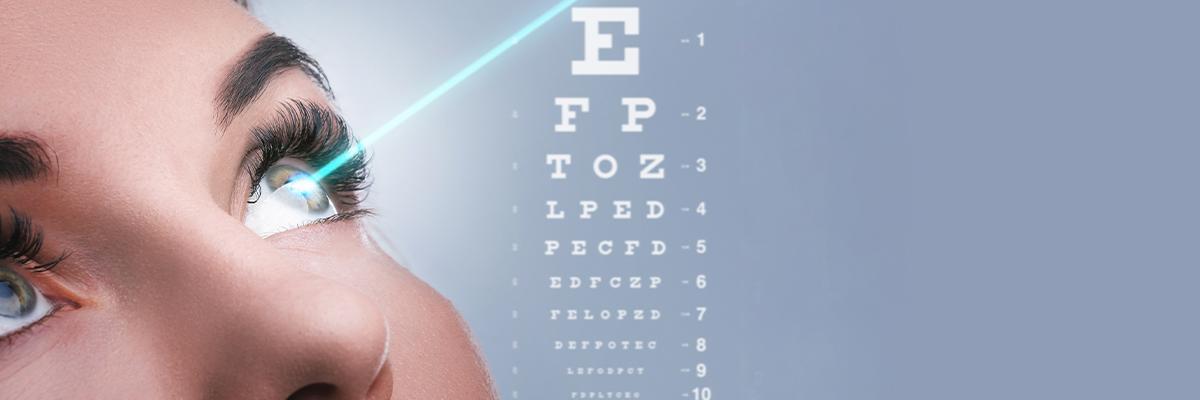You are now being directed to a third party website. Please note that this website is for convenience of the user. spectacularkids is not collecting, storing, or accessing any personal data of the user, and all the information collected, stored, and accessed herein is with the third party https://myeyedoctor.in/ website. You expressly consent to share all your details with https://myeyedoctor.in/

We all are aware that Myopia has now became a matter of global concern. Being a widespread and costly eye disorder, affecting as many as 80–90% of young adults in some Asian cities, strategies must be planned to prevent and control Myopia.1
Severe or high grade myopia is associated with serious complications like retinal detachment,macular degeneration, early cataract and glaucoma and also a leading cause of blindness.2
Myopic vision can be corrected with prescription lenses or corneal refractive surgery, these measures do not cure the underlying cause of myopia. Therefore simple, safe, and effective therapeutic modalities are needed, to prevent the onset and progression the underlying cause which is axial elongation inside the eye.1
Many interventions like optical, surgical and pharmaceutical are available to retard the progression of myopia. Besides traditional way to correct the refractive error new modalities are available. These current modalities include progressive addition lenses (PALs), peripheral defocusing lenses, contact lenses, overnight orthokeratology (Ortho-K), multifocal soft contact lenses, outdoor activities, and pharmacological agents.3
Let us know about them!
Optical intervention – It includes use of lenses in the form of spectacles or contact lenses. They include Bifocal and multifocal lenses, peripheral defocusing lenses, defocus incorporated multiple segments (DIMS OR MSMD [Multi segemt of myopic defocus]), contact lenses, progressive additional lenses. Bifocal and multifocal lenses- many studies have been done in past decades to determine its role when used in spectacles and are preferrable options for kids with myopia. Peripheral defocussing lenses are available in both spectacles and contact lenses and study results are promising. DIMS provides clear vision and myopic defocus simultaneously for wearers at distance,
intermediate or near objects simultaneously.3,4
Orthokeratology – these lenses are specially designed gas permeable contacts which are worn overnight and are designed to reshape the cornea and temporarily correct low to moderate myopia by changing the shape of cornea. Patient is advisec to wear the lenses overnight which flattens the cornea and provides clear vision during daytime without any glasses or contact lenses.3,4
Pharmaceutical intervention – This includes daily application of low dose atropine eye drops in the concentration of 0.01% which has minimal side effects compared to other concentrations of atropine preparations yet efficacy is same. Atropine has been known to mankind as a drug since long and its first use in treating myopia goes back in nineteenth century. Various studies had been conducted all around the world to determine the correct concentration of atropine ranging from 1% to 0.01%.Although atropine is used in many countries in Asia for this purpose it is rarely used in the USA and Europe due to its side effects. Also it is not recommended for long term use. Also pirenzepine, a drug which has been used since long to treat dyspepsia and paediatric endocrine disorders. Pirenzepine in concentration of 2% gel is used to check myopia progression.2,3
Surgical interventions - Surgical interventions include laser corneal refractive surgery, intraocular lens implantation and implantable collamer lens can are established to effectively treat myopia but do not stop progression. Excimer Laser refractive surgeries include -
Amongst these LASIK is the most popular option for myopia correction and is superior to PRK and can be used to treat upto -15 D but is recommended to correct upto -10D of myopia.5
Intraocular surgery – can be used to treat very high degree of myopia (more than -10D of myopia).Recent advances in surgical treatment include Fematosecond laser, and small incision ienticule extraction.5
Latest surgical strategies to halt progression of high myopia include subscleral injection of mesenchymal stem cells and dopamine injection.5
Along with these medical interventions some lifestyle changes are helpful in controlling myopia progression to some extent. Measures like more time spending in outdoor activites,3 restriction to screen time and limiting hours of near work are known to be effective in developing myopia and slow progression.